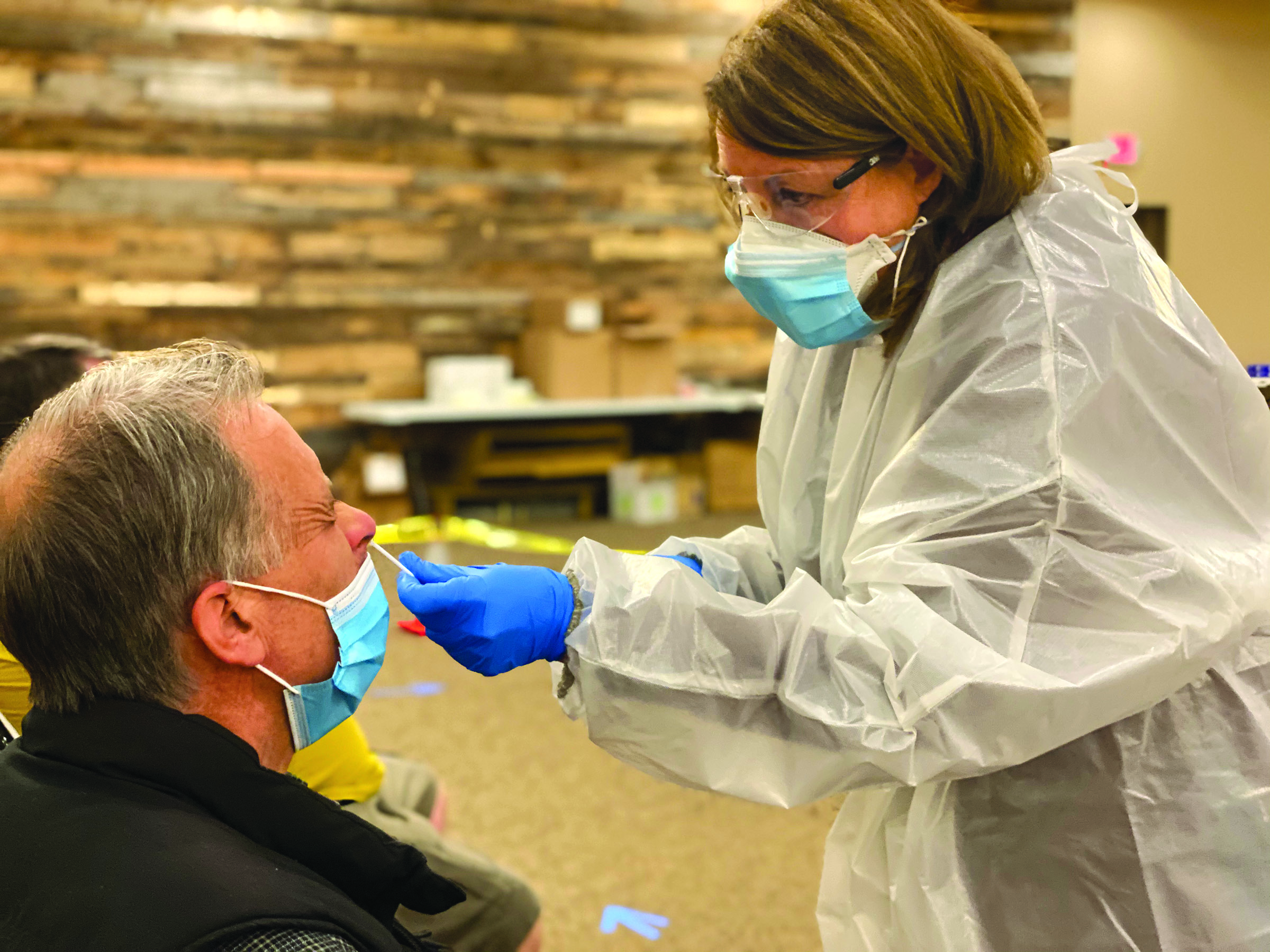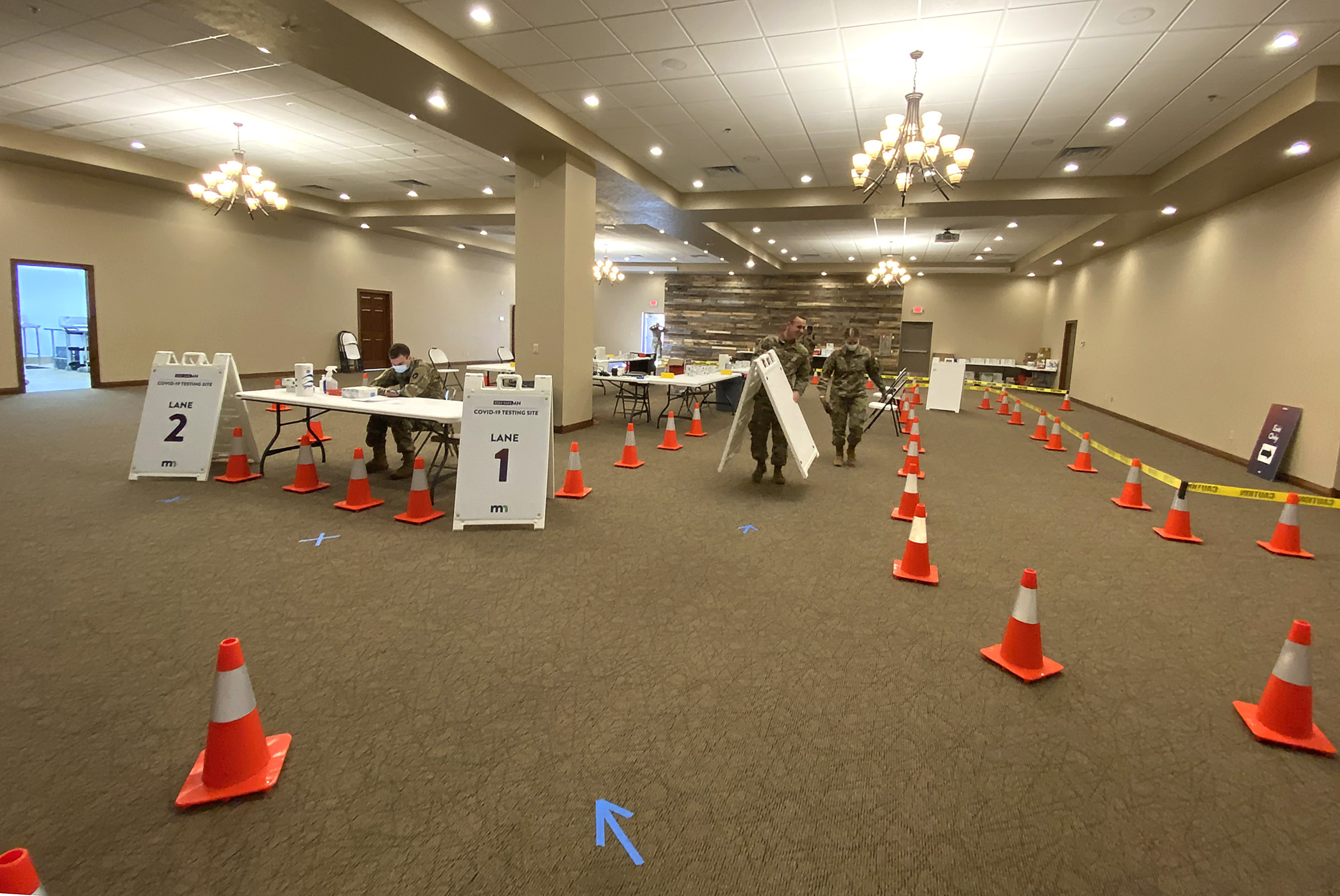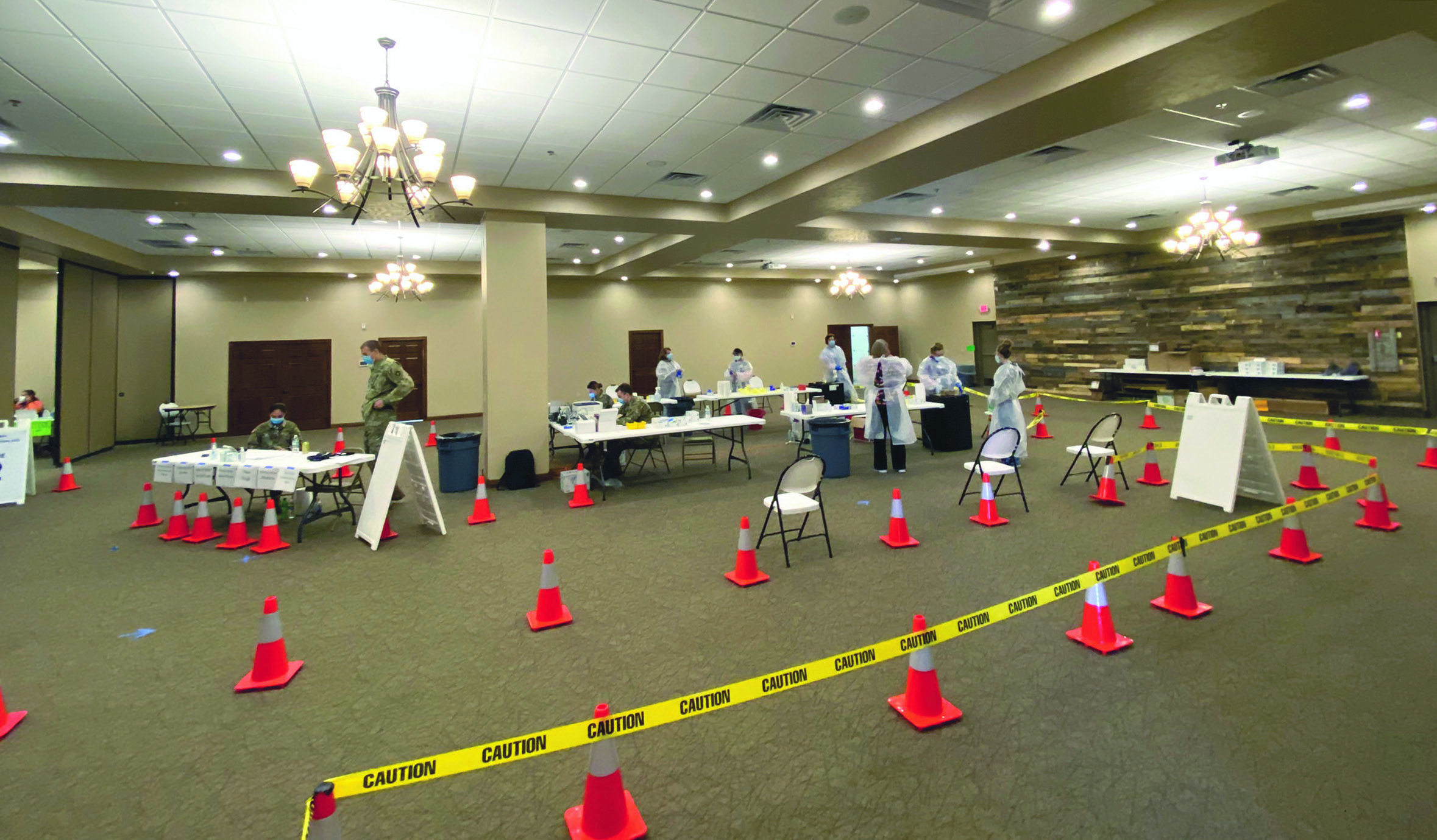 ,
,  ,
, 
A handful of Minnesota National Guardsmen descended on Grand Prairie Events in Luverne Monday and within two hours turned the events center into a COVID-19 community test site.
The Minnesota Department of Health is in its fourth week of offering free, “no barrier” tests in communities around the state for anyone who wants to participate, regardless of symptoms of circumstances.
The goal is to test as many residents as possible in an attempt to isolate those who are positive and quarantine close contacts and, ultimately, control the spread of the virus.
Shawn Schloesser, detailed to the State Emergency Operations Center, has been assisting with process for the state.
“Barrier-free means you need no ID, no insurance and there’s no waiting. And you don’t have to have symptoms,” Schloesser said.
“Often in a health care system you have to have symptoms in order to be tested. The state recognizes that asymptomatic people can also spread COVID. So, we encourage everyone to get tested, and that’s how we in turn keep our businesses, our schools and our economies open.”
Luverne’s testing started Tuesday and continues through Thursday, Oct. 15, from noon to 6 p.m. at Grand Prairie Events.
To make an appointment, go to https://www.primarybio.com/r/luverne.
Preregistration is key
When participants preregister, it saves them time and allows for a safer, smoother process at the test site. Also, it allows for proper spacing of appointments.
“That way we’re getting only 20 people showing up every 15 minutes,” he said.
As of noon Tuesday, 145 of the available 600 appointments that day had been reserved. Schloesser said the goal for the three-day period is to test 1,800 people.
People can still arrive without preregistration, but it will mean they’ll have the extra step on site, or possibly have to come back the next day.
The process takes less than 10 minutes from start to finish. Participants are spaced apart as they enter, they’re seated near a testing station, and nurses come to them to administer the tests.
“The test itself takes about 20 seconds, 7 to 10 seconds for each nostril,” he said. “We’re using the mid-grade swabs, so they don’t go way far back; they stay in your nose.”
He added that the process is entirely “no-touch” to avoid the spread of germs.
“We designed the site with the thought that everyone has Covid, so whether you have symptoms or not, our goal is to keep everyone safe and healthy.”
Tests will be processed either by Mayo Clinic Laboratories or the University of Minnesota. Results come back in 48 to 72 hours.
Contact information allows for contact tracing
Participants provide their names and contact information for test results to be communicated to them and for contact tracing for positive results.
“Your test results will be communicated by phone or email if you’re negative,” Schloesser said.
“If you’re positive, you’ll be contacted by a nurse with the health department providing you instructions, checking on you, and letting you know what type of resources are available to you in the community while you isolate.”
Anyone can travel to Luverne or any of the communities hosting free test sites.
When the state started community testing, it was running two test sites per week. Since then, the National Guard has been providing logistical support to deliver supplies and staff to communities.
“By bringing on the National Guard to support us, we are able to do six test sites throughout the state per week,” he said about what the state calls “surge testing.
“Now the state has decided to extend the surge, so we’ll have testing through weeks five through eight.”
The state contracts for nursing staff through Ware Evans, which means community professionals and volunteers are not burdened with extra work.
Schloesser said local health professionals and emergency personnel are invited to be part of the process in order to observe.
“We are constantly sharing our best practices with communities, so that down the road, if there were to be vaccination clinics, we’ll have all the logistics in place,” he said.
More than numbers
The free testing clinic may increase local Covid case numbers, but ultimately it will help control the spread.
“The numeric threshold was for the beginning of the school year,” Schloesser said.
“Now, what really matters is case investigation and contact tracing and identifying the source of the spread.”
For example, the current outbreak in the Tuff Memorial nursing home will affect Rock County’s case numbers, but districts consider the effect of those cases on students before changing learning methods.
“Contact investigation drives discussion for schools,” Schloesser said.


